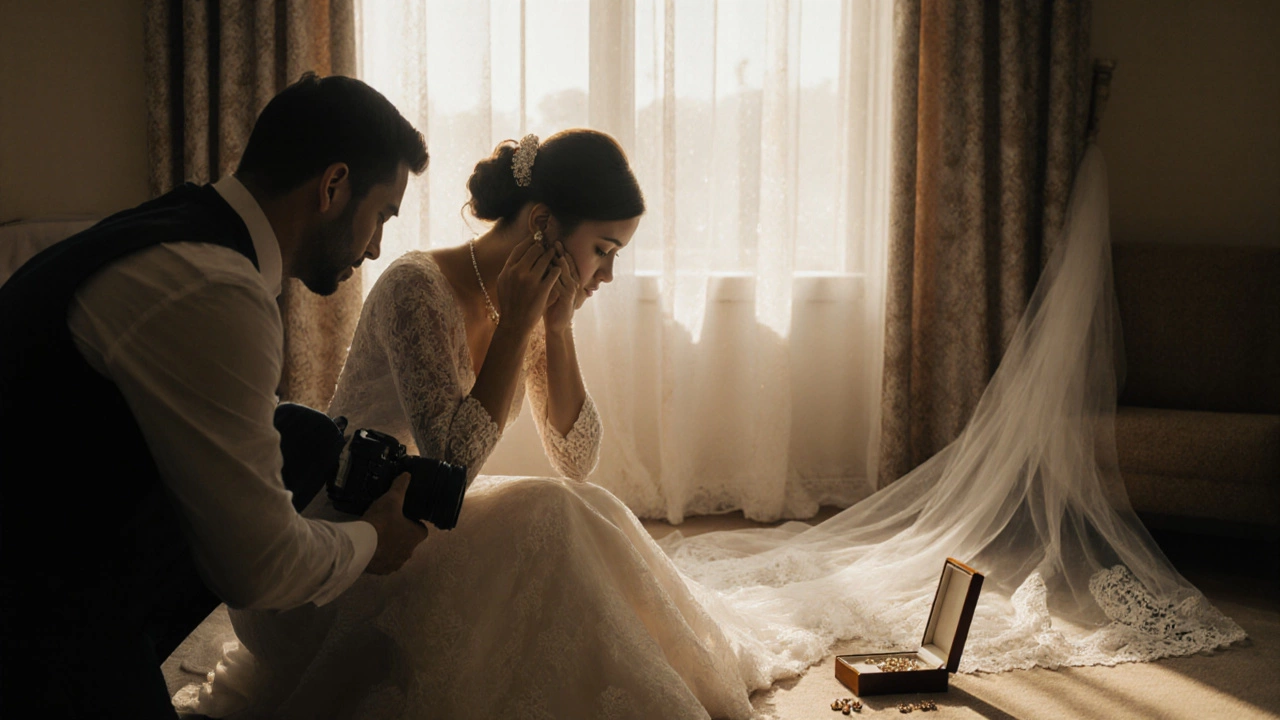Wedding Photo Timeline: Plan Your Perfect Day with Smart Timing
When you think about your wedding photo timeline, a structured plan that maps out when and where photos will be taken on your wedding day. It’s not just about snapping pictures—it’s about making sure you don’t miss the quiet moments, the big reactions, or the golden hour light that turns a good photo into a great one. A well-timed photo schedule keeps everyone moving, reduces stress, and gives your photographer the space to do their best work. Without it, you risk running late, missing key shots, or feeling like you barely had time to breathe between the ceremony and the reception.
Your wedding photography schedule, the detailed plan that guides your photographer through the day’s key moments should start early—before the bride even puts on her dress. Most couples forget that getting ready photos are just as important as the ceremony shots. These candid moments—laughter with bridesmaids, the first look, the nervous smile before walking down the aisle—tell the real story of your day. Your photo moments checklist, a simple list of must-have shots like family groupings, ring details, and the first dance should include at least 15 key moments, from the veil being adjusted to the last sparkler send-off. Don’t just list them—assign realistic time blocks. A 10-minute family photo can turn into 30 if you don’t plan for slow movers or last-minute outfit changes.
Timing matters more than you think. If you schedule your first look right after hair and makeup, you’ll have 45 minutes of natural light for portraits before the ceremony. If you wait until after the reception, you’ll be rushing in dim light with tired guests. Your wedding day timeline, the full schedule of events from morning prep to late-night exit needs to be shared with your photographer, coordinator, and even your parents. They’re not just guests—they’re part of the machine that keeps your day running. And don’t forget buffer time. Every wedding runs behind. Add 15–20 minutes between major events, especially after the ceremony. People need to move, find seats, grab drinks, and get into position. Rushing photos means rushed emotions—and you’ll regret it when you look back.
Some couples skip the timeline because they think it’s too rigid. But a good timeline doesn’t kill spontaneity—it protects it. It ensures you get the classic shots everyone expects, so you can relax and enjoy the unexpected ones—the way your dad cried when you walked down the aisle, or how your dog stole the ring bearer’s pillow. The best wedding photos aren’t just posed. They’re real. And they happen when you’ve planned enough to let the magic unfold without chaos.
Below, you’ll find real advice from couples and photographers who’ve been there. Learn how to build a timeline that works for your size, your venue, your style, and your people. Whether you’re having a 20-person elopement or a 150-guest celebration, the right timing makes all the difference.

- Oct, 30 2025
- Comments 0